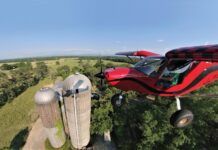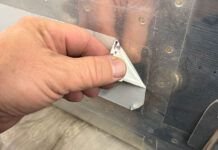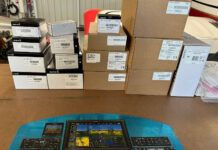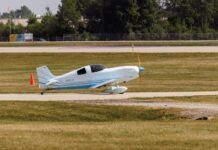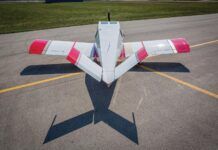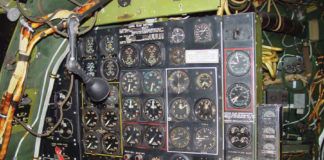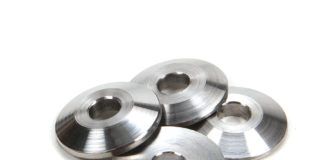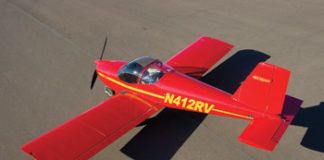How do you know if you can build an airplane? The honest answer is that you don’t really know for sure until you have finished one. An airplane project (like any major construction job) is a daunting task to those that look at the big picture. From start to finish, there are so many parts and processes along the way that the overall project very often leaves one numb and deciding to go fishing or get back to work on that golf game. It is often stated (and personally, I find it true) that you build an airplane the same way you eat an elephant—one bite at a time. The same thing is true, of course, about building a house or raising children, so this is nothing unique or otherworldly. Any big project needs to be broken down into manageable chunks in order to fit it into our head. While you have to keep the overall picture in mind, on a day-to-day basis, you simply have to look at the next step, not the entire journey.
Pick a rudder, any rudder! From left to right: Zenith CH-750 Super Duty, CubCrafters EX, RV-8, and Xenos ruddervator.
In the early days of homebuilding, you didn’t buy a kit, you bought a set of plans. Those plans might, or might not, have had instructions and/or a bill of materials along with them, but the bottom line was that you had to decide where you were going to start. Many builders never got further than sweeping the floor and organizing the shop before the whole idea of buying materials and finding a place to begin overwhelmed them. Today, most kit manufacturers have figured out that getting started is the first step to finishing, and each has a way for you to begin that helps put that first toe into the water. They want to get you started learning the basic techniques of putting together an airplane, and at the same time give you something that will be a finished part of your flying machine when you’re done—and the easiest, most recognizable piece that gives you a sense of accomplishment often turns out to be a rudder.
While practice kits have traditionally been things like trim tabs or tool boxes, both excellent ways to get your feet wet and give you something useful at the same time, the rudder seem to be a piece of engineering art that gives the new builder a larger item and a sense of having an actual airplane part that is recognizable by anyone that comes to visit. A rudder is a significant piece of an airplane—and it’s a way to steer you down the path to completion. If, when you are much further down the road, with well developed skills and an eye towards craftsmanship, you decide that you can build a better one to go on your actual airplane, the parts for a new one are relatively inexpensive, and the original try can be put on display. Everyone will know that you are an airplane builder when they see it hanging on the wall!
We recently sampled rudder “practice kits” from several kit companies and are beginning to collect an assortment of wall art that has our neighbors wondering just how many airplanes are going to emerge from the shop—and what we’re going to do with such a variety! Right now, we’ve got ruddervators for our ongoing Xenos project, a spare rudder for an RV, a covered CubCrafters rudder waiting for a final paint color, and a recently popped-together rudder for a Zenith CH 750 Super Duty, all looking for airframes to steer around the sky. Each has its own unique construction process and techniques, and each is a good example of what is to come if we were to proceed with working on the rest of the airframe. On this, the manufacturers have met their goals, giving the builder a good feel for what skills, tools, and techniques will be necessary to proceed with the entire airplane.
Getting your first experience as an airplane builder by tackling something manageable, like a rudder, is a good and logical way to start. For years, we’ve heard folks say, “I have my tail kit,” when asked if they have finally gotten started on their dream airplane project, and that is because many of the kit manufacturers offer the tail feathers as a logical place to get started. Offering the rudder alone is a logical extension of this train of thought: Give the builder something useful and recognizable as a way to get them started and maybe hooked. Let’s face it, for most of us, building airplane parts (we all build parts; building an airplane is impossible…but you can build enough parts to assemble one, eventually) is addictive, and maybe even mood-altering. Seen that way, the rudder is the new “gateway drug” into the world of homebuilding. But it is a safe way in, and should you find that it’s not for you, a rudder can quite easily be made into a coffee table. If nothing else, it’s a great conversation piece.
Still trying to decide what to build? Try out different construction techniques and start your own rudder collection today!




